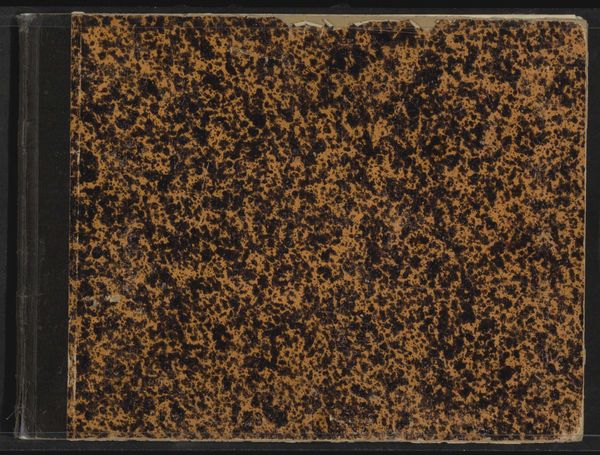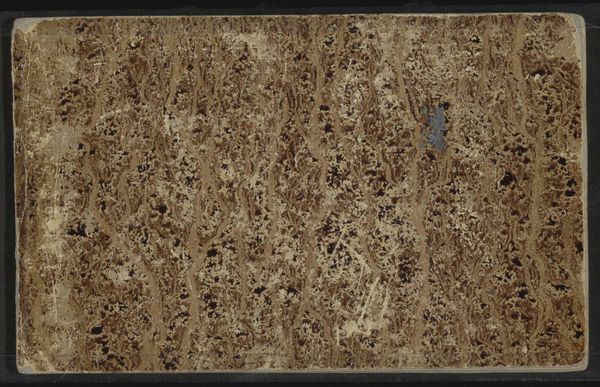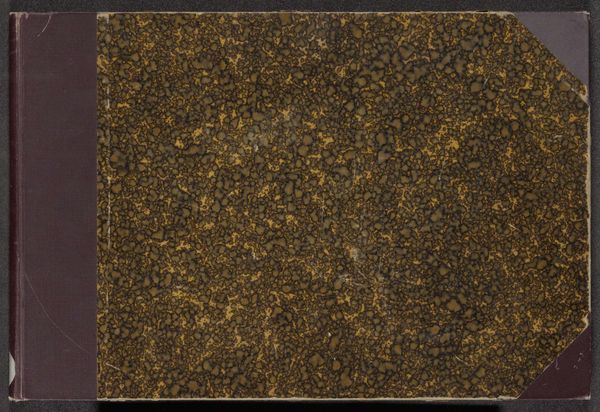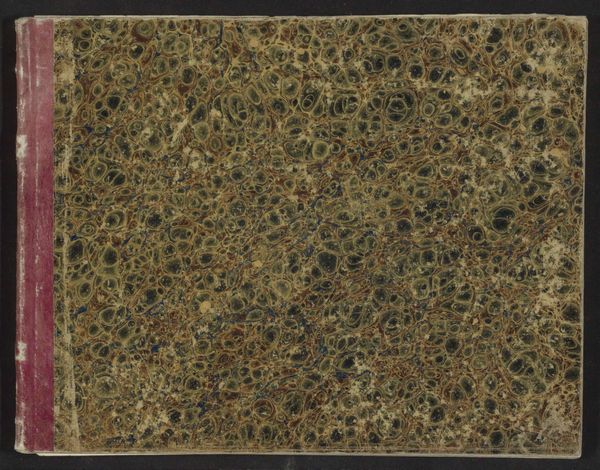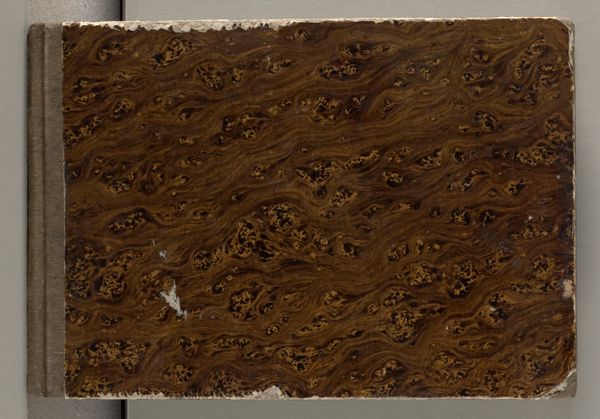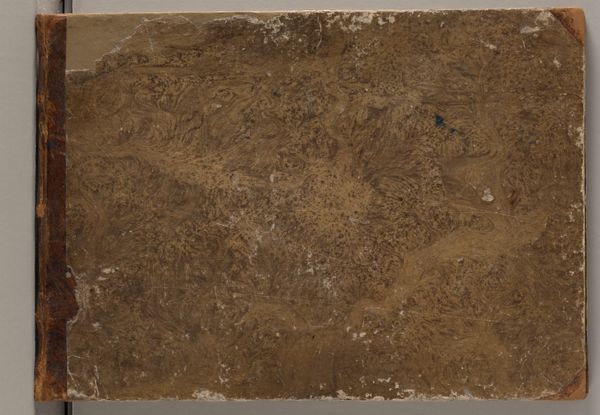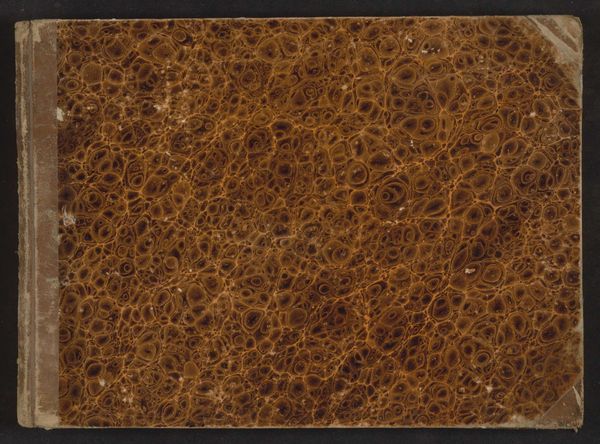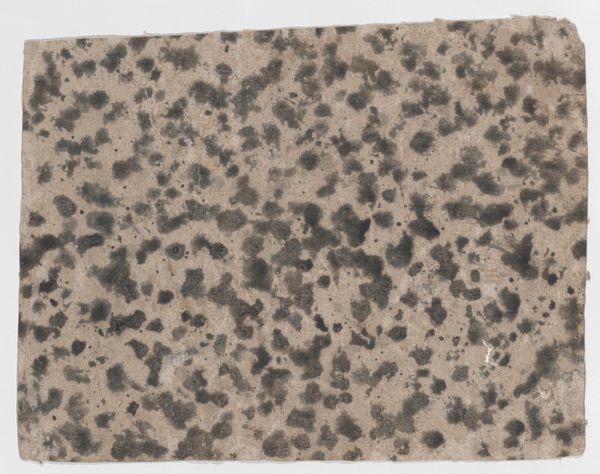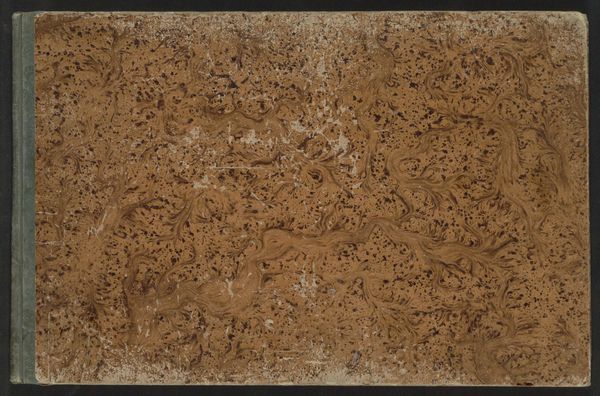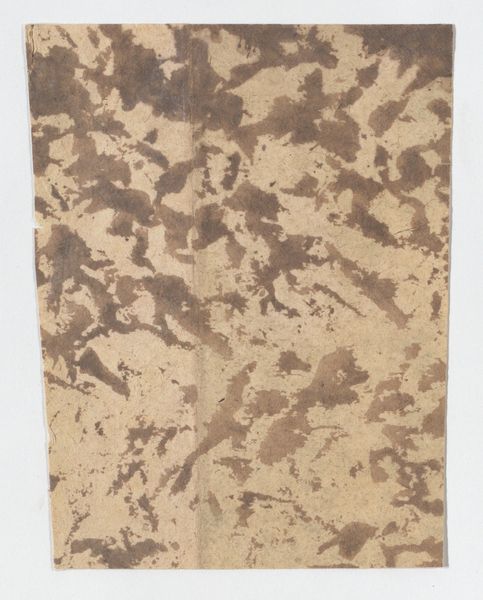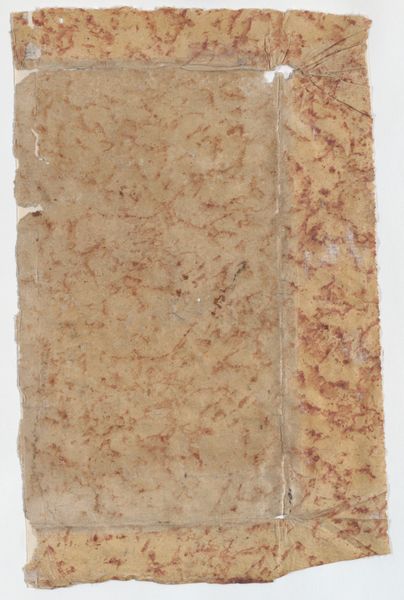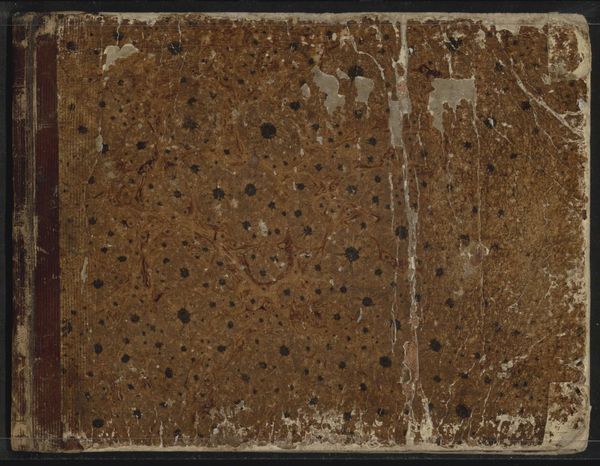
Copyright: Public Domain
Curator: Before us is “Skizzenbuch,” or Sketchbook, created by the German artist Hans Thoma. Its estimated date of creation falls between 1860 and 1870, a period when Thoma was developing his artistic voice. Editor: I’m immediately drawn to the intimacy of this object. The mottled cover speaks of use, of being carried around and filled with ideas. It feels very personal, like peering into the artist’s mind. Curator: Indeed. Thoma, associated with the Romanticism movement, often used sketchbooks as vital tools. Consider them spaces of freedom where ideas around identity and nature are sketched, examined, and redefined through visual language, separate from larger cultural demands of producing “finished” artworks. Editor: The idea of the sketchbook as a site of resistance resonates. Was Thoma intentionally subverting the polished art world by showcasing a space usually kept private? Could it be a kind of visual diary reflecting on German unification in 1871, with a potential commentary on shifts in German identity at that pivotal historical moment? Curator: It is plausible to think so. The physicality of the sketchbook as object plays a crucial role in its reception, influencing how it fits within exhibition strategies that grapple with themes of power, access, and the construction of art history. Think of museum accessibility efforts in representing marginalized voices... Editor: Absolutely. Viewing it not just as an artistic tool but as a material artifact loaded with contextual history offers new insights. Knowing Thoma's affiliations, can we view it as a silent, visual testimony of Romantic resistance in a rapidly changing society? It’s amazing how a simple sketchbook invites profound questions. Curator: By looking at art and the mechanisms behind it—the socio-political pressures on an artist, the collecting and exhibiting of that artist’s work—we see the forces at play when viewing. Editor: And through it, re-evaluate the very structures which we use to understand our world. It shifts the focus from passively appreciating Romanticism to interrogating its place within broader historical and philosophical discourses, making for truly engaging artistic experience.
Comments
No comments
Be the first to comment and join the conversation on the ultimate creative platform.
